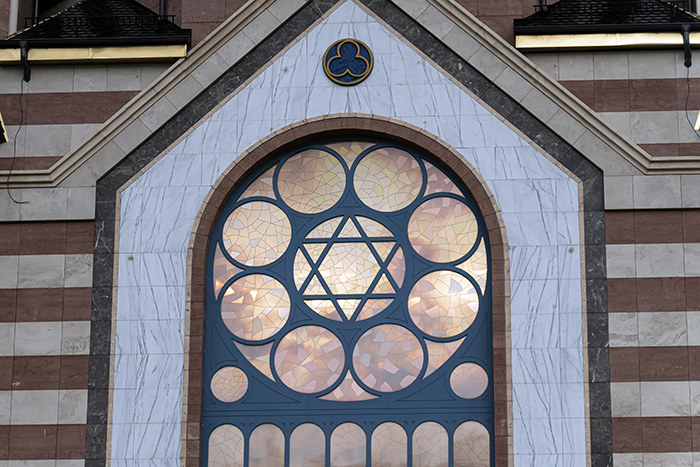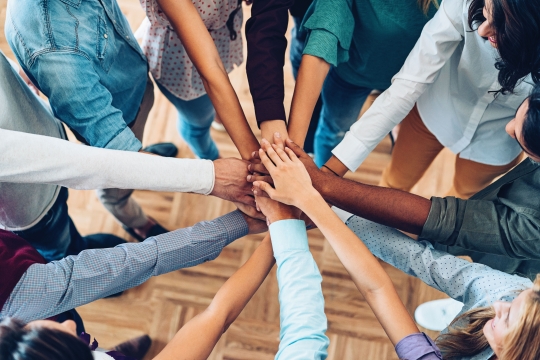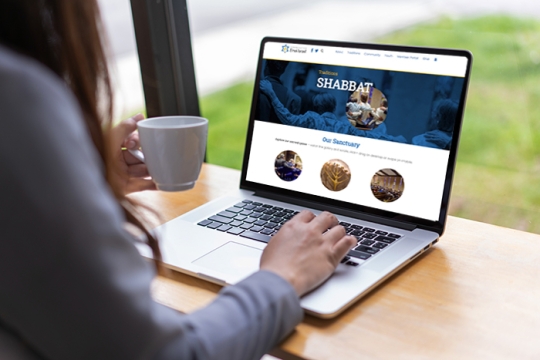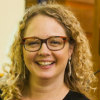
A few years ago, when my son was still pretty young, we were heading out to participate in Friday night services for families with young children. When he asked where we were heading, I said, "We're going to Temple Micah." We weren't going to the building on Wisconsin Avenue that is Temple Micah, we were heading to a local coffee shop and bookstore where services were being held. But to me, that was Temple Micah. The people we would see, the feeling we would get by being together - all of that was Temple Micah - not the temple building itself.
But here is the thing about my son. He had (and still has) an incredible memory for streets and directions, and he kept looking out the window and saying, "This isn't the way to Temple Micah!"
When we finally parked on a street he didn't recognize, he yelled, "I thought you said we were going to Temple Micah!" It was only in this moment that I realize that, to him, the very words "Temple Micah" mean a building, but to me, those very same words mean people. If I heard the words "Temple Micah," I would imagine my friend, Rabbi Josh, who would be there with his three kids and wife Nani.I would picture the familiar music we would sing together, and I would imagine the yummy challah we would inhale, and the food, and then, the community and conversation.
I was reminded of this story throughout the first quarter of 2021, when I spent time listening to congregational leaders from across the Union for Reform Judaism (URJ). I wanted to hear what they had learned about congregational life during the pandemic - what assumptions proved false, what questions they were wrestling with, and what new insights had developed.
One story repeated itself consistently. A member family would call and say some version of the following: "Since the building is closed this year, we're going to wait to renew until we can be back in the building." It didn't matter if the congregation was still holding worship services, congregational education, or plenty of other online engagement. People put memberships on hold because the building was no longer a part of the equation during COVID. Their choice was to no longer make a financial contribution.
This may be hard to reconcile with the other story many congregational leaders told - that the online experience of Jewish life often led to an increase of participants at Shabbat services or other programs. However,both of these stories can be true: an increase in online participation and a decrease in membership or financial commitments.
There are a few ways to react to this scenario. One would be to lament the loss of these individuals and families who decided to put their membership on hold. Why don't they value what we have to offer? Why does this community not feel essential enough to them that they would pay for its value?
Another reaction might be one of curiosity. What is going on in the life of these people? What does feel essential to them? What economic factors might be playing a role?
A third reaction, and the one I want to address more specifically, is to question the narratives we have told ourselves about our congregations and our communities.
When I heard the story aboutthe the family that chose not to renew because the congregation was not in the building, I was saddened, but also not too surprised. For years, I have seen congregations extoll the assets of their community as one of real estate:
"We have an incredible historic building in the heart of the city."
"Our sanctuary can fit up to 1000 people."
"Our building has been around for over 100 years."
"Look at all the symbolism, intentionality, and meaning we put into this building."
So it did not surprise me when several congregants questioned the value of their membership when the building was no longer a part of the narrative of the community.
None of this is to say that we should have somehow come up with creative ways to use our real estate during the pandemic. To begin with, many buildings remained open because they were running essential, and often heroic, pre-school functions. Rather, this is an opportunity to rethink how we tell the story of our communities and what assets we prioritize. At the heart of that answer, we must say with clarity, it is our people.
It is our clergy, educators, and professional staff who had to quickly reinvent themselves towards a new way of delivering Jewish life and experiences.
It is our boards and lay volunteers who have served as sacred partners in maintaining vibrant Jewish life through a global pandemic.
It is the adults and the children of all colors and ages who find themselves called to become part of something larger than themselves.
These are our assets. They are what we need to prioritize.
Given that so many congregations are beginning to, once again, find themselves in their sanctuaries and buildings, this is an opportunity to shift the narrative about who we are. Let's not go back to proclaim the majesty of our architecture, but rather extoll the splendor of the souls that make up our kehillah kedoshah (holy community).
Related Posts

Setting Your Leaders Up For Success

Safety, Equity, and Accountability is the Path to a Thriving Jewish Community

